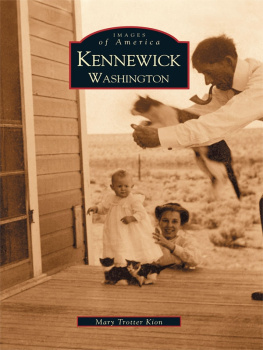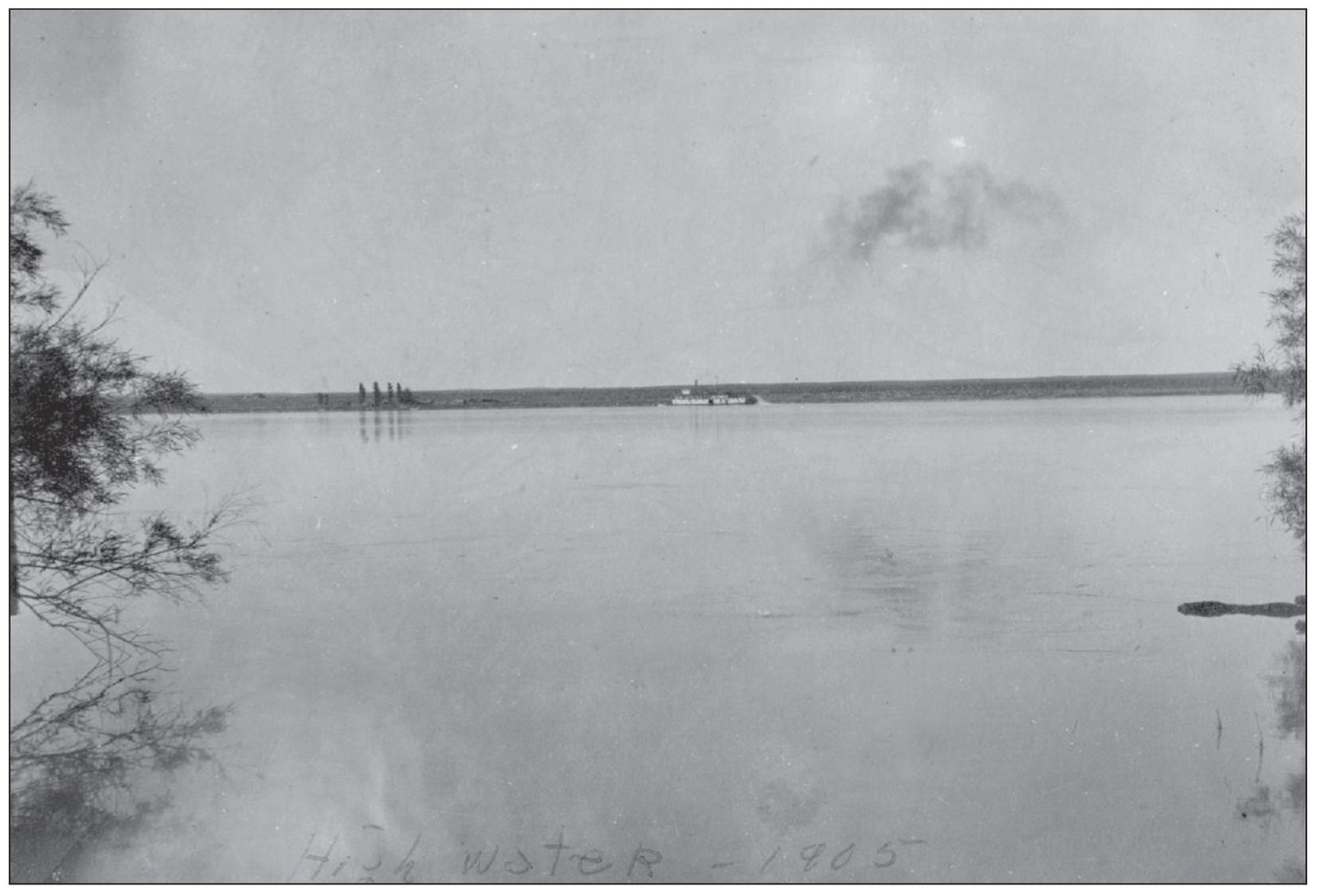One
LIVING WITH THE RIVERS
ACROSS THE COLUMBIA RIVER. This view is looking towards Kennewick, across the wide expanse of the Columbia River, from the empty beach that borders the town of Pasco, Washington. Steam rising into the air in the distance gives a feeling of the progress that Kennewick saw throughout the early 1900s and on into the future. (Courtesy of EBCHS.)
GREEN RIVER KNIFE. This relic of an undetermined earlier time in Kennewicks history was unearthed, from about two feet down in 1980, by the authors son while installing irrigation lines at the base of Badger Mountain just outside of present-day Kennewicks city limits. The Green River knives and similar bladed tools were often carried by mountain men and were common trade items to the Indians. (Courtesy of Jason Troy Kion.)
HUDSONS BAY STORE. This relic of the past stood at the original site of White Bluffs, Washington. How thrilling it would have been to hear the stories this old building might have told of the past. The placing of a post at White Bluffs by Hudsons Bay was good businessgood fur business. From this location a road northeast was laid out in 1863 across the Plain connecting the future Kennewick Valley with Montana and Kootenay routes. (Courtesy of EBCHS.)
DISASTER STRIKES, APRIL 14, 1893. At Wades Bar, the Annie Faxton ended her days on the river when her boiler exploded. Ships Captain Baughman landed, dazed and hurt, on the bank. His pilot was beheaded by flying wreckage. And though Purser Tappan survived, his bride was thrown into the river where she drowned. A total of eight people were killed. (Courtesy of EBCHS.)
THE Almota IN 1897. This ship was built at Celilo Falls in 1876, long before the Northern Pacific Railroad bridge builders arrived in Kennewick. The call of Steamboat a comin seems to have attracted a variety of site-seers. Note the presence of not only passengers but also cowboys and Indians. By the 1860s, steam-powered craft carried men and freight up the Columbia from Portland. The Almota was dismantled in 1901. (Courtesy of EBCHS.)
THE Hercules IN 1899. This Columbia River sternwheeler surely witnessed early Kennewicks progress as she steamed up and down the river. She may have observed the C.J. Beach family on a Sunday picnic, in 1882, as they paddled their canoe across the Columbia and picked out their homestead site where the future town of Kennewick would someday be established. (Courtesy of EBCHS.)
THE FLOODED COLUMBIA IN 1905. In this year the bridge was damaged by ice flows. In 1894 the Columbia rose to a level higher than had ever been recorded before, overran its banks, and stood three to four feet deep in Kennewick. The floodwaters that were strewn with logs, merchandise, dead horses, cattle, and even a miners cabin reached up to the tracks on the bridge. (Courtesy of EBCHS.)
THE LAURITZ SMITH FARM. This photo was taken from the Highlands above the railroad tracks in about 1904 or 1905. The Columbia River is shown at the top of the picture. At the time this picture was taken, Ewald Smith and his brothers had five connecting farms along the Columbia River. The Northern Pacific Irrigation canal and the Oregon and Washington Railway and Navigation tracks are in the foreground. The area pictured here is now a part of the freeway between Kennewick and Richland, Washington. Columbia Park now covers the area between the highway and the river. Some 26 years later in 1931, Lauritz Smith or a decent of his would be an 8th grade teacher in the Kennewick School. Also teaching the 8th grade that year with Smith was Carl Precht who had previously, in 1926, been a 6th grade teacher. (Courtesy of EBCHS.)





















